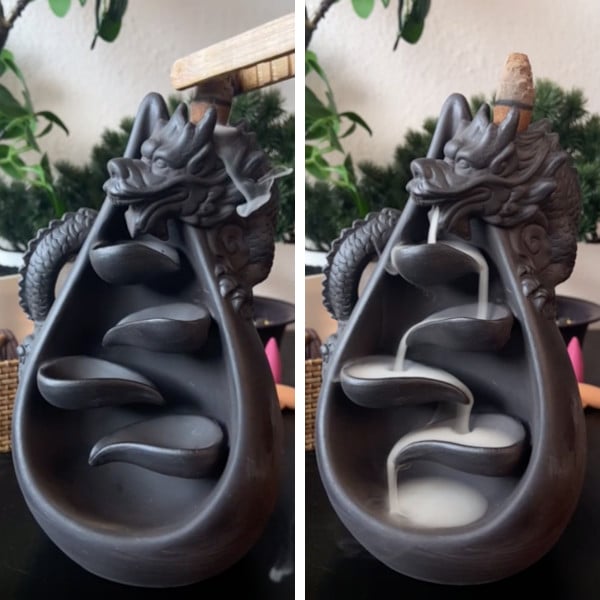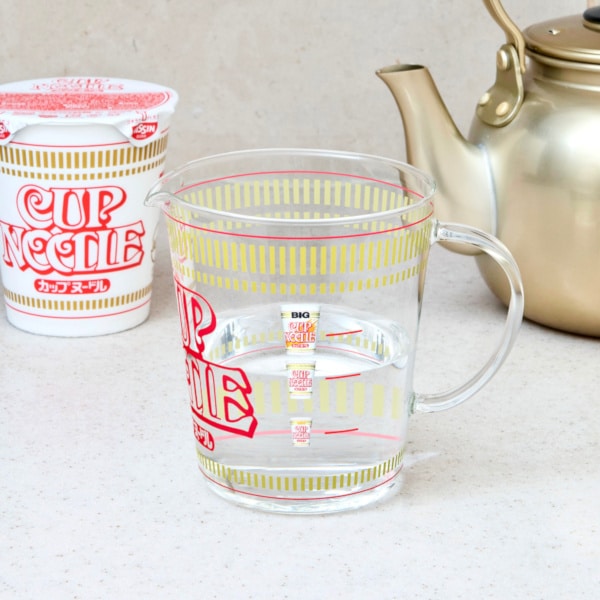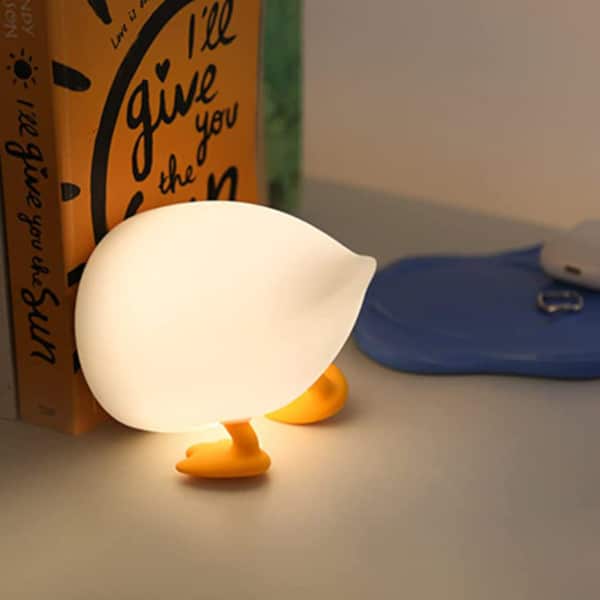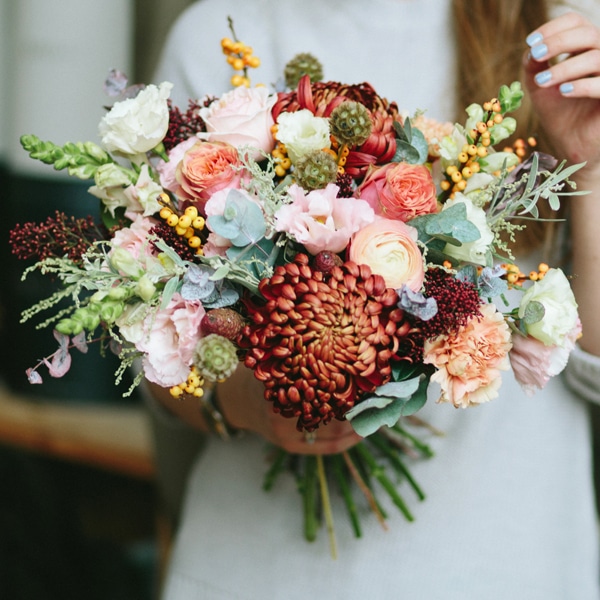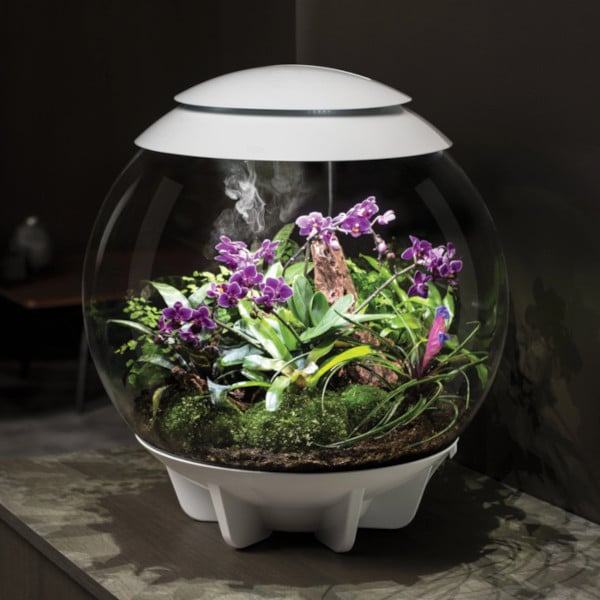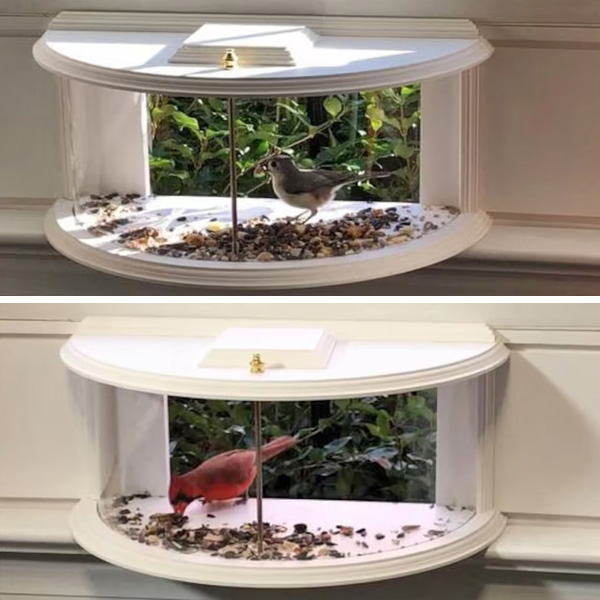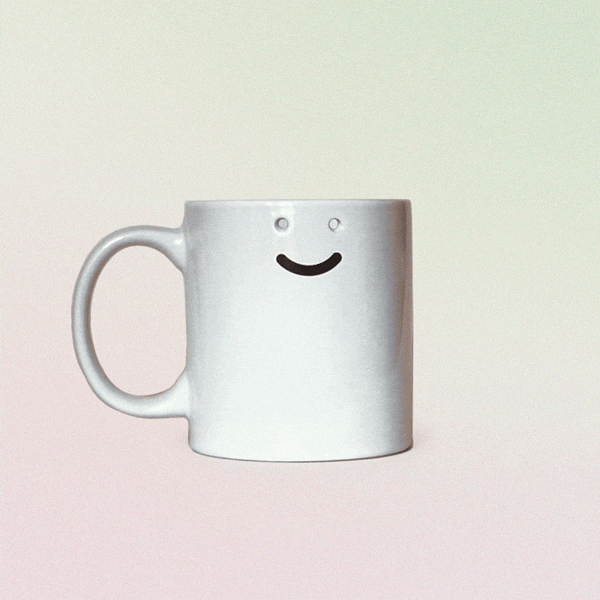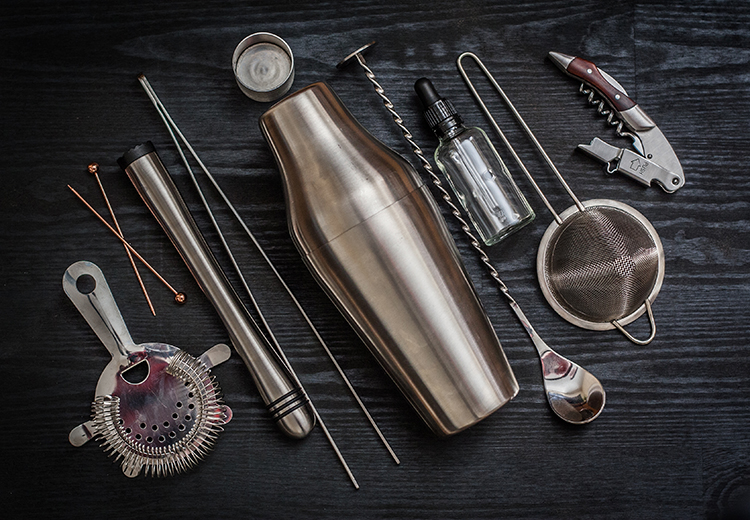
Photo: Stock Photos from BARTFIRE/Shutterstock
This post may contain affiliate links. If you make a purchase, My Modern Met may earn an affiliate commission. Please read our disclosure for more info.
Would you like to learn the basics of making delicious cocktails at home? Whether you're entertaining others or making a drink as you binge watch Netflix, you can outfit your bar cart with awesome vintage shakers, swizzle sticks, and decanters. With modern and personalized options too, it's easier than ever before to set up a bar to your exact taste. Will you sip a classic Americano like James Bond or blend your own frozen drinks with Blue Curacao as people did in the 1980s? With the bar tools below, you can try all this and more without having to change out of your pajamas.
People have always collected the supplies to create libations at home. In the 19th century, liquor chests and crystal decanters were for after-dinner sherry and brandy. In the 20th century, prohibition meant that everyone had to drink at home or at a secret speakeasy. The 1950s through the 1970s were the heyday of the home bar with garish swizzle sticks, built-in basement counters, and elegant dry martinis.
Here are the basic supplies you'll need to make thousands of types of delicious cocktails at your new home bar.
Boston Shaker
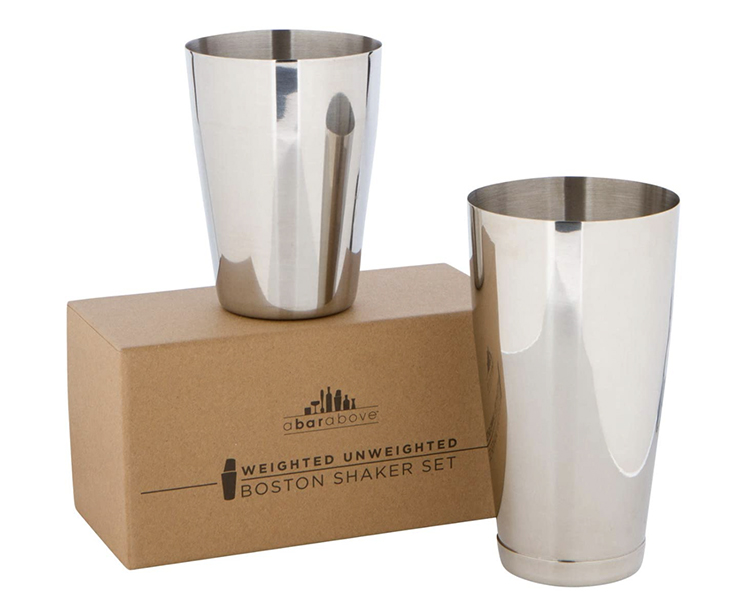
Top Shelf Bar Supply Store | $24.95
A lot of cool vintage cocktail shakers have a built-in strainer, but you'll find professional bartenders rarely use those types of models. The internal strainer requires too much time and effort to properly clean before cocktails. So if you are planning drinks for one, they are a cool piece of vintage flair. However, for a sleeker and faster experience, use a Boston shaker. The two parts—one shorter than the other—fit together to seal in your ingredients. With the proper wrist flick, you will be able to make cocktails for the whole group with only quick water rinses between drinks. Bonus: with a Boston Shaker you can learn to slightly crack the two pieces and fill a glass, no strainer required.
Hawthorne Strainer
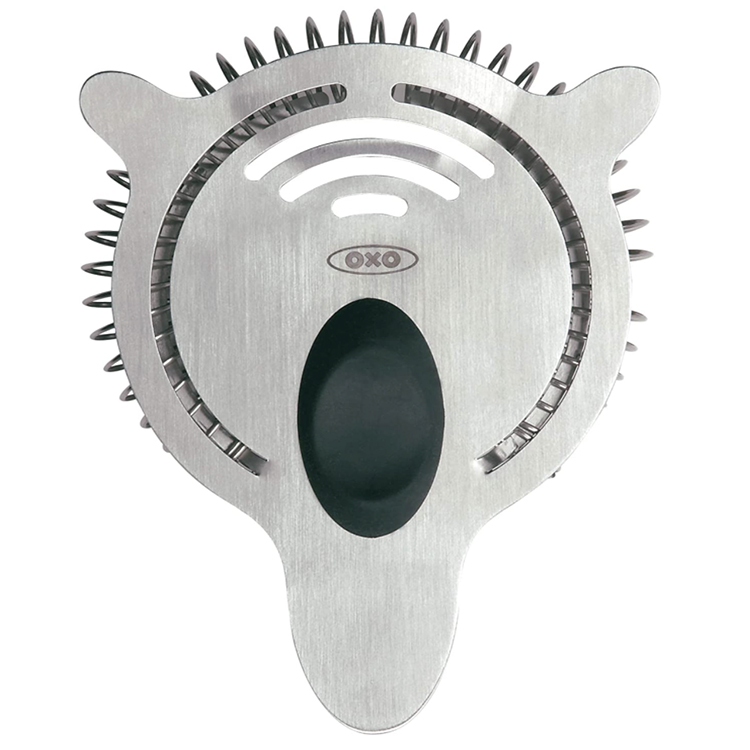
OXO Store | $7.99
Even the best bartenders still use strainers. The Hawthorne strainer dates back to 1892 and takes its name from The Hawthorne Café, a once-famous bar in Boston. The main purpose of a strainer is to block the used ice (from shaking or stirring) from polluting the fresh drink. Once you practice, it is easy to pour your drinks from your shaker one-handed—neat or over fresh ice. Here's a video with tips and tricks from the team at Tito's Vodka.
Muddler and Bar Spoon
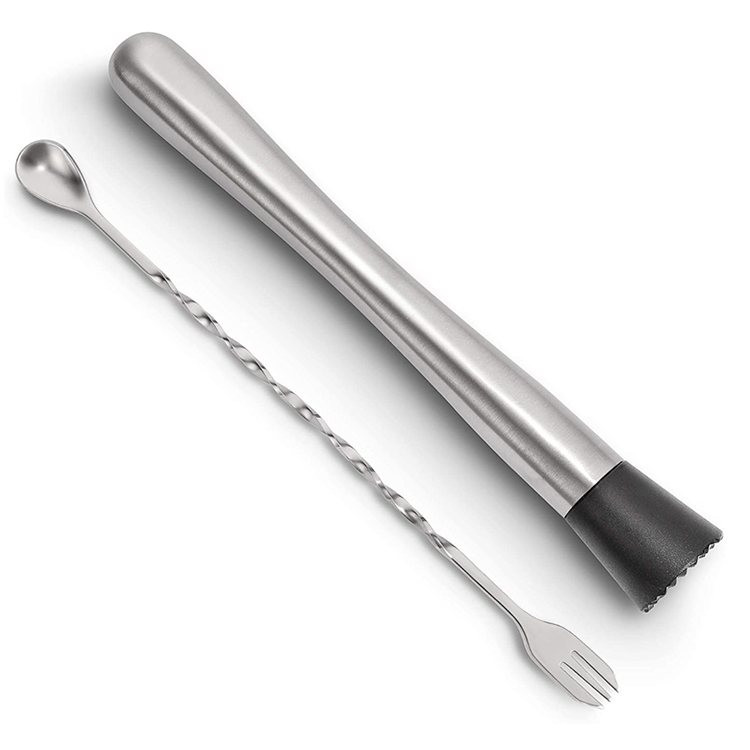
HIWARE Store | $8.99
A muddler is a pestle for mashing or lightly grinding fresh ingredients to release juices. For example, muddlers are used to release the minty freshness from mint leaves in a mojito and to muddle the fresh fruit used to make an Old Fashioned. To stir these libations, you'll need a special long mixing bar spoon—these usually have swirly stems. Shaking a cocktail is the easiest method to chill the liquor, but it can dilute the drink with bits of ice or even “bruise” the flavors of liquors like gin. A classic martini is stirred, as are many drinks that are only distilled spirits. Place the curved back of the spoon against the shaker or pint glass and sweep it around the outside of the glass as so. Here are more instructions on how to properly stir a cocktail.
Measuring Jigger

Piña Barware | $14.99
Cocktail recipes list ingredients in ounces or millimeters (in old recipes you will see simple proportions or “parts”). To make sure you are concocting your cocktail property, pour each ingredient into a jigger. These small measuring cups come in varying sizes, but will usually include a 1.5-ounce measure. This is the standard measure of one shot in the US.
Paring Knife, Peeler, and Juicer
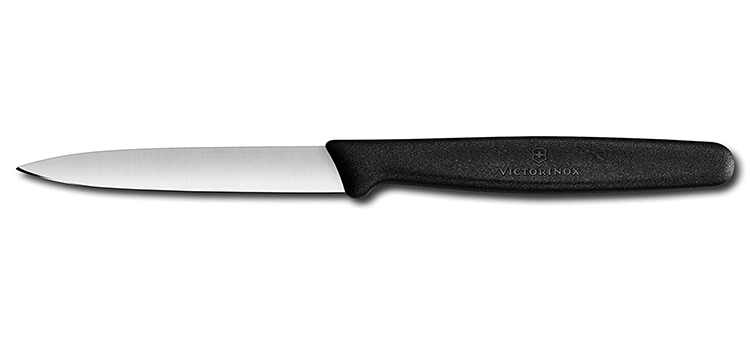
Victorinox Store | $9.16+
Garnishes are the little fruits or vegetables that make your drink look pretty and complement the flavor. To carve up orange slices, lemon wedges, and other garnishes, you will need a sharp paring knife. A vegetable peeler can also be useful to make twists—bits of skin that release aromas to lightly flavor the rim of your glass. A knife can be used, but the peeler is a safer option if you have slippery fingers. (Learn to make the perfect twist.) Lastly, a juicer can be helpful to extract fresh lemon, lime, and orange juice for your delicious creations.
Wine Key
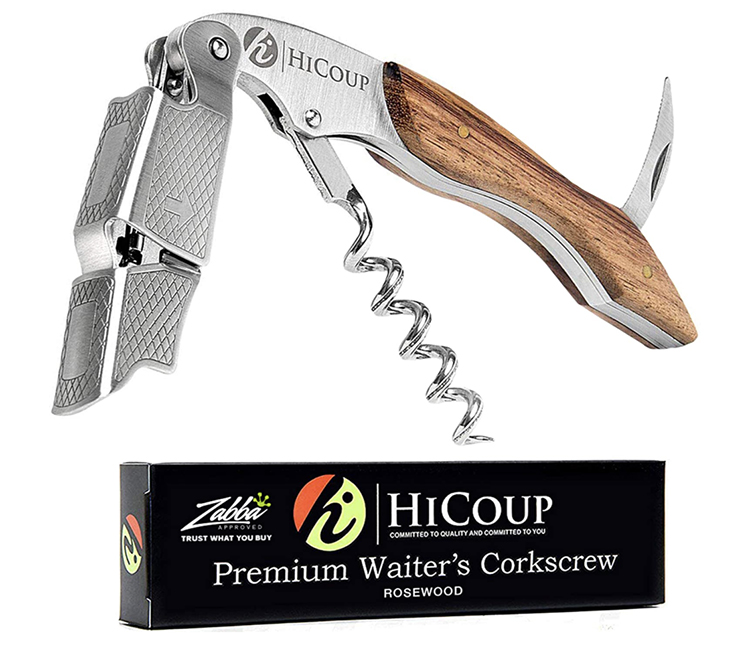
HiCoup Kitchenware Store | $12.97
A good wine key or corkscrew is necessary for all vino lovers. You want a strong build, sharp blade to cut foil, and easy leverage for removing the cork. There are lots of good options available online, but if you happen to be near a Trader Joe's, its wine keys are quite good in a pinch.
Once removed, it never hurts to inspect the cork once you've removed it from the bottle. The cork can tell you something about the quality of the bottle, the way the wine was stored, and if it has possibly gone off through contamination or oxidation.
Swizzle Sticks and Skewers

WesAndPipVintage | $24
Top off your fun cocktails at your home bar with vintage swizzle sticks. You'll find countless options on Etsy in handmade glass and cheesy plastic (people collected them as souvenirs). Guests can use their swizzle stick to stir their own drink; this tool was once used to “flatten” sparkling drinks for the ease of the stomach.
The swizzle stick's drink companion—the skewer—is a less exciting purchase. However, skewers are convenient to hold elaborate garnishes in place; be sure to use natural, biodegradable skewers rather than plastic.
Glassware

Riedel Store | $29.90
Choosing glassware is one of the most exciting parts of building your bar. Are you looking for sleek modern pieces, or do you prefer eclectic and colorful vintage? To start, you will want highball glasses and rocks glasses. The former is tall and for highballs (a class of cocktail combining a carbonate and spirit) and are very similar to the slightly larger Collins glass. These are ideal for gin and tonics, whiskey sours, or rum and cokes. Rocks glasses, by contrast, are usually shorter and between eight to 10 ounces; they are for spirits over ice. These glasses will be perfect for an Old Fashioned, Sazerac, or Negroni.
The third essential glass is the coupe glass. This stemmed glass dates to the 17th century and was designed for sparkling wines and champagne. The design actually allows the bubbles to escape your drink faster, but you will look like you're a party guest of the Great Gatsby‘s bashes. Importantly, they essentially double as martini glasses—which are technically different, with straight sides. If you are limited by space or budget, coupe glasses will work for martinis and any cocktail served “up”—chilled but served without ice—such as a Manhattan.
Keep building your glassware collection and you will find there's infinite variety. Navigate the confusing world of wine glass shapes, for instance, with this article by Wine Folly. You can also find elegant martini glasses, cute pints, delicate flutes, organic tulip glasses, low-slung brandy snifters, and specialized Scotch glasses. Building a bar can be expensive, but your local thrift store will have great vintage finds for cheap.
Decanters
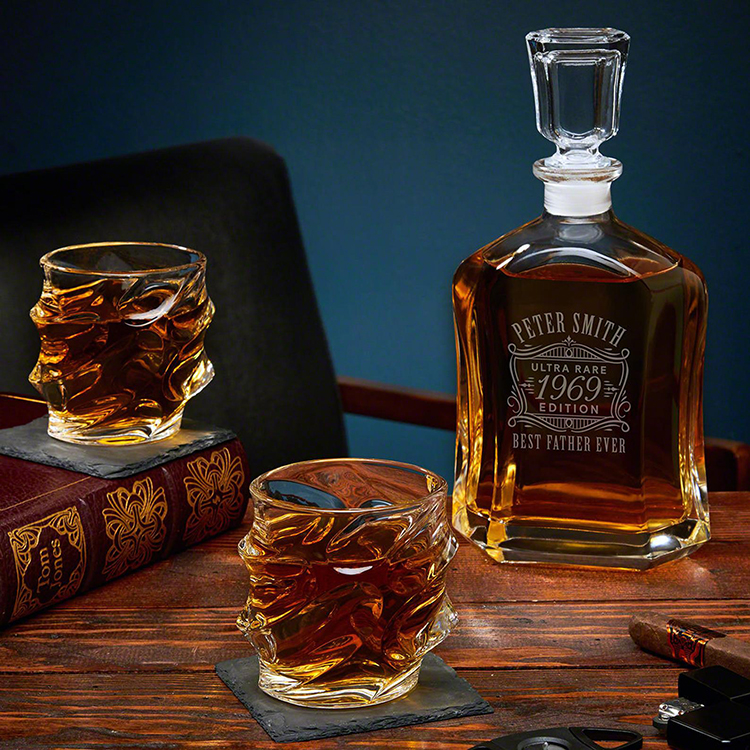
HomeWetBar | $79.95
Decanters really tie your bar aesthetic together. Different shapes correspond to different liquors, but the two basic types you will find are for liquor or wine. Wine decanters are used to aerate for flavor, not for storing wine. To learn more, check out this article from Wine Enthusiast.
By contrast, decanters have long been used to store shelf-stable liquors such as whiskey. These are always capped bottles, often quite dramatic as if they are set dressing on Downton Abbey. Experts generally agree that decanting whiskey has little effect on taste, but may encourage some evaporation of alcohol content if left for long periods of time.
Vintage Cocktail Recipe Book

EpicureanBookcase | $10
Although the internet is full of amazing cocktail recipes, having a book or two can be a fun way to explore the cocktails of yore. A vintage favorite is Mr. Boston: Official Bartender and Party Guide. You can usually find copies at used book stores or online, as it has been in print since 1935. Alongside vintage illustrations, you will find forgotten recipes to wow your guests. Another excellent vintage collection is The Savoy Cocktail Book—written by Harry Craddock, an American ex-pat working at the American Bar at the Savoy Hotel in London. Published in 1930, the book is a joyous exploration of cocktails, punch, and other bar drinks that would not have been allowed in prohibition America. Modern reprints preserve the charm of the original and are easy to follow once you get the hang of the older measures.
Now for the Edible Bar Accouterment
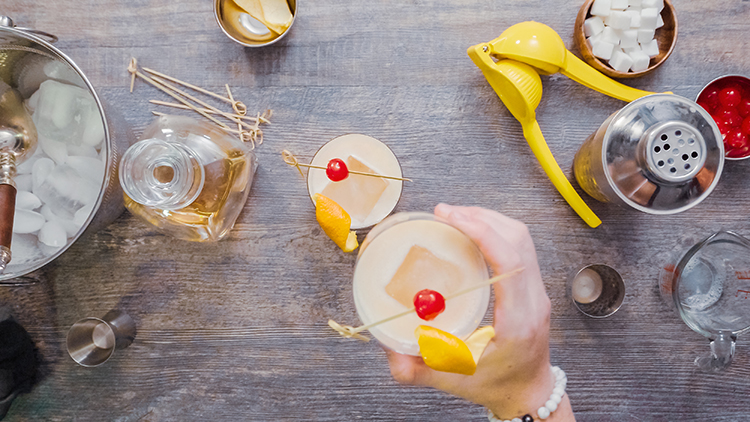
Photo: Stock Photos from ARINA P. HABICH/Shutterstock
You will need drinks to serve with all your new bar tools. Depending on your taste, a basic bar can start with the basics: vodka, gin, tequila, bourbon or whiskey, and rum. A bottle of sweet vermouth and one of dry will also help you create certain classic cocktails—such as martinis and Manhattans. Other spirits and liquors such as triple sec or Cointreau (for margaritas), Kahlua (for coffee drinks), or brandy (for Sidecars) are useful. Simple syrup is often required and is easy to make at home. Bitters—concentrated flavorings—are used in many drinks. One of the most popular is Angostura bitters, an aromatic spice that dates back to 1824.
Many drinks are made with mixers. Sour mix, soda, tonic, or ginger beer can all stock your fridge for use at your new bar. There are virtually endless cocktail combinations; you will enjoy exploring as you learn. Top each creation off with a garnish, if required. That olive, onion, or maraschino cherry is the “cherry” on top of creating the perfect home bar.
Related Articles:
Glow-in-the Dark Aurora Borealis Cocktail
35 Creative Gifts for Foodies That Even Picky Eaters Will Love
Enchanting Cocktail Glasses Turn Your Drinks into a Swirling Rainbow
This Home Ice Cream Machine Produces Delicious Desserts in 60 Seconds












































































